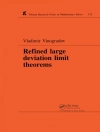Mathematical modeling in the form of differential equations is a branch of applied mathematics that includes topics from physics, engineering, environmental and computer science. The mathematical model is an approximate description of real processes. Mathematical modeling can be thought of as a three step process:1) Physical situation2) Mathematical formulation3) Solution by purely operations of the mathematical problem4) Physical interpretation of the mathematical solution Over the centuries, Step 2 took on a life of its own. Mathematics was studied on its own, devoid of any contact with a physical problem; this is known as pure mathematics. Applied mathematics and mathematical modeling deals with all three steps. Improvements of approximations or their extensions to more general situations may increase the complexity of mathematical models significantly.Before the 18th century, applied mathematics and its methods received the close attention of the best mathematicians who were driven by a desire to develop approximate descriptions of natural phenomena. The goal of asymptotic and perturbation methods is to find useful, approximate solutions to difficult problems that arise from the desire to understand a physical process. Exact solutions are usually either impossible to obtain or too complicated to be useful. Approximate, useful solutions are often tested by comparison with experiments or observations rather than by "rigorous" mathematical methods. Hence, the authors will not be concerned with "rigorous" proofs in this book. The derivation of approximate solutions can be done in two different ways. First, one can find an approximate set of equations that can be solved, or, one can find an approximate solution of a set of equations. Usually one must do both.Models of natural science show that the possibilities of applying differential equations for solving problems in the disciplines of the natural scientific cycle are quite wide.This book represents a unique blend of the traditional analytical and numerical methods enriched by the authors’ developments and applications to ocean and atmospheric sciences. The overall viewpoint taken is a theoretical, unified approach to the study of both the atmosphere and the oceans.One of the key features in this book is the combination of approximate forms of the basic mathematical equations of mathematical modeling with careful and precise analysis. The approximations are required to make any progress possible, while precision is needed to make the progress meaningful. This combination is often the most elusive for student to appreciate. This book aims to highlight this issue by means of accurate derivation of mathematical models with precise analysis and MATLAB applications.This book is meant for undergraduate and graduate students interested in applied mathematics, differential equations and mathematical modeling of real world problems. This book might also be interested in experts working in the field of physics concerning the ocean and atmosphere.
Ranis Ibragimov
Mathematical Modeling of Natural Phenomena [PDF ebook]
Mathematical Modeling of Natural Phenomena [PDF ebook]
Beli ebook ini dan dapatkan 1 lagi PERCUMA!
Format PDF ● Halaman-halaman 547 ● ISBN 9781536129786 ● Penyunting Ranis Ibragimov ● Penerbit Nova Science Publishers ● Diterbitkan 2018 ● Muat turun 3 kali ● Mata wang EUR ● ID 7217547 ● Salin perlindungan Adobe DRM
Memerlukan pembaca ebook yang mampu DRM












